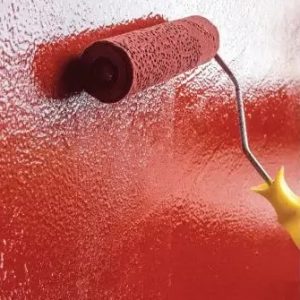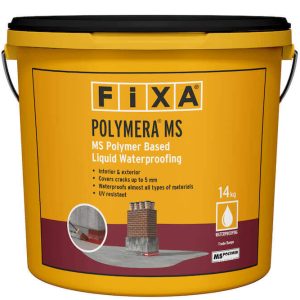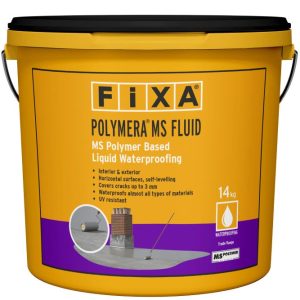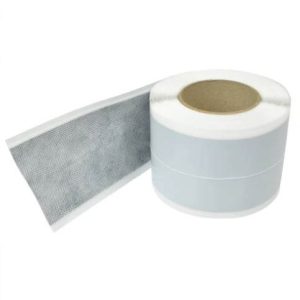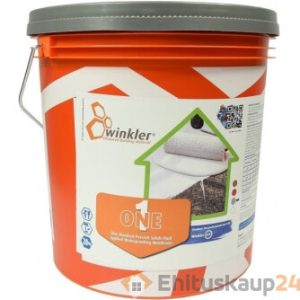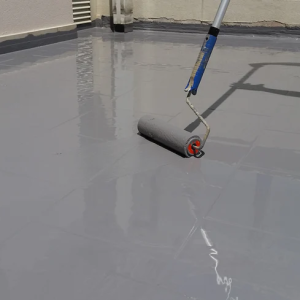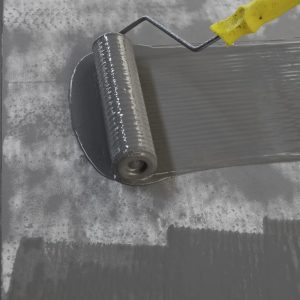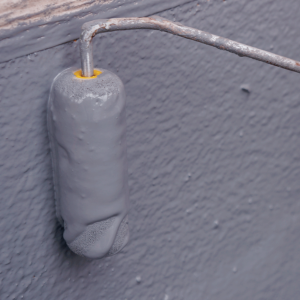Liquid roofing membranes are a type of roofing system that is applied in a liquid form and then cures to form a durable, waterproof membrane. These membranes are commonly used in flat or low-slope roofing applications and offer several advantages over traditional roofing materials such as asphalt or single-ply membranes.
Seamless application: Helping to reduce the risk of leaks and water infiltration.
Adhesion: Liquid-applied membranes create a strong bond that helps to prevent water penetration.
Flexibility: These membranes typically exhibit excellent flexibility, allowing them to accommodate building movement and temperature fluctuations without cracking or splitting.
Ease of Maintenance: Liquid-applied membranes are relatively easy to maintain and simple to repair.
Compatibility: Liquid-applied membranes can often be applied over existing roofing materials, providing a cost-effective option for roof restoration or repair projects.
Applying Liquid Roofing Membranes
When applying liquid membranes, there are several important considerations to ensure successful installation and long-term performance:
Surface Preparation: Proper surface preparation is essential for the adhesion and performance of liquid membranes. The substrate should be clean, dry, and free of debris, dirt, oil, grease, and other contaminants. Any existing roofing materials should be removed or properly prepared according to manufacturer guidelines.
Weather Conditions: Liquid roofing membranes should be applied under favorable weather conditions, in line with the manufacturer's guidelines. Extreme temperatures or adverse weather conditions can affect the application and curing of the membrane.
Application Method: Liquid roofing membranes can be applied using various methods such as spray, roller, or brush, depending on the product and the specific requirements of the project. The chosen application method should be suitable for achieving the desired thickness and coverage while ensuring proper adhesion and uniformity.
Thickness and Coverage: It's crucial to apply the liquid membrane at the recommended thickness and coverage rate specified by the manufacturer. Insufficient thickness may compromise waterproofing performance, while excessive thickness may lead to cracking or poor curing.
Curing Time: Liquid roofing membranes require adequate curing time to develop their full strength and waterproofing properties. The curing time can vary depending on factors such as temperature, humidity, and product formulation. It's essential to follow the manufacturer's guidelines regarding curing time before subjecting the membrane to foot traffic or other stresses.
Compatibility: Compatibility between the liquid membrane and other roofing components such as flashing materials, sealants, and insulation should be verified to prevent compatibility issues that could compromise the integrity of the roofing system.
By considering these important factors and following manufacturer guidelines and best practices, you can ensure the successful application and performance of liquid roofing membranes.
Contact BaseTec - Complete Systems. Reliably Delivered.
If you require assistance with liquid roofing membranes or need advice on which liquid roofing membrane is best suited for your requirements, contact our friendly teams in Kent - 01732 906 826 - or Leeds - 0113 521 6789.
Return to our full range of
Flat Roof Waterproofing products.
